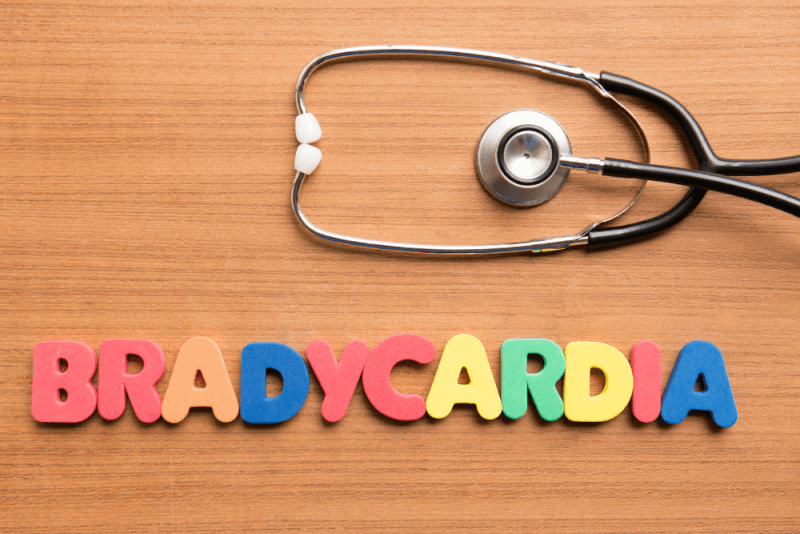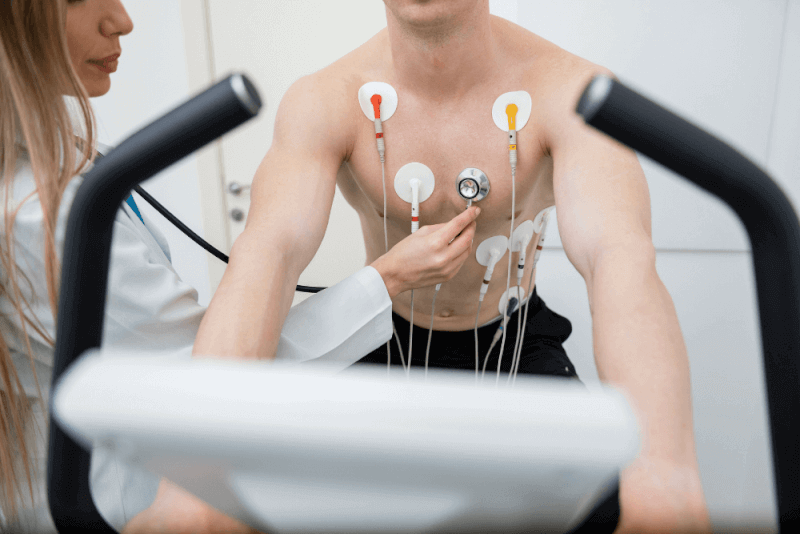What is Broken Heart Syndrome (Takotsubo Cardiomyopathy)?
Broken heart syndrome, also known as Takotsubo cardiomyopathy, is a sudden weakening of the heart muscle. This short-term condition is typically observed after a sudden physical or emotional stress, hence the name "broken heart syndrome." The sudden weakening of the heart muscle causes other parts of the heart to work harder.
The weakening of the heart muscle can also disrupt the blood supply and pumping ability. If the heart cannot pump blood effectively, it can harm the entire body. Every cell in the body needs a constant supply of oxygen carried by the blood.
Broken heart syndrome is also known by several other names, including:
- Apical ballooning cardiomyopathy (or transient apical ballooning syndrome)
- Stress cardiomyopathy (or stress-induced cardiomyopathy)
Causes of Broken Heart Syndrome
Research on broken heart syndrome has not yielded definitive results. However, it is believed that serious stress-inducing events, such as a car accident or divorce, may trigger broken heart syndrome. This is because certain hormones are released in response to physical or emotional stress, which are thought to affect heart function.
In a small number of cases, no trigger can be identified for the onset of the condition. Additionally, there is no evidence to suggest that it is inherited from parents to children.
In general, broken heart syndrome is believed to be caused by severe physical and emotional stress. These stressful situations may include:
- The death of a loved one
- Receiving good news
- Receiving bad news
- Traumatic events such as an accident or earthquake
- Experiencing intense fear
- Becoming extremely angry
- Severe pain
- Strenuous physical activities
- Asthma attacks
- Seizures
- Stroke
- High fever
- Low blood sugar
- Significant blood loss
- Surgery
Symptoms of Broken Heart Syndrome
Symptoms of broken heart syndrome can begin to appear within minutes or hours after a stressful event. The release of stress hormones temporarily stuns the heart muscles, resulting in typical heart attack symptoms.
Symptoms that may occur in broken heart syndrome include:
- Sudden, severe chest pain is the primary symptom of broken heart syndrome.
- Another main symptom of broken heart syndrome is shortness of breath.
- Weakening of the left ventricle of the heart is a distinguishing symptom alongside other symptoms.
- Irregular heartbeat
- Low blood pressure
- Heart palpitations
- Fainting
Diagnosis Criteria for Broken Heart Syndrome
The diagnosis of broken heart syndrome begins with a physical examination. Subsequently, the symptoms and the patient's medical history are reviewed. Certain tests are performed to confirm the diagnosis. These tests include:
- Blood tests to check for a specific enzyme released by damaged heart cells
- EKG
- Coronary angiography
- Echocardiography
- Chest X-ray
- Heart MRI
- Ventriculogram, where dye is injected into the left ventricle to understand the size of the heart chamber and its pumping efficiency
Imaging tests can help identify the damaged area of the heart. However, to rule out the risk of a heart attack, coronary angiography must be performed. Unlike a heart attack, the arteries in the heart are not blocked in broken heart syndrome.
Treatment Methods for Broken Heart Syndrome
There is no standard treatment for broken heart syndrome, but patient care is similar to that for a heart attack. Most patients stay in the hospital until they fully recover.
Many people with broken heart syndrome completely recover within a few months or even less. To ensure that the heart is functioning better, a follow-up echocardiogram test is performed 4-6 weeks after symptoms appear. In some cases, broken heart syndrome may recur.
Medications
After a diagnosis of broken heart syndrome, medication is prescribed to reduce the stress on the heart. These medications also help prevent further attacks. The prescribed medications may include:
- Angiotensin-converting enzyme inhibitors, also known as ACE inhibitors
- Angiotensin II receptor blockers, also known as ARBs
- Beta blockers
- Diuretics
- Blood thinners
Side Effects of Broken Heart Syndrome Treatment
General side effects that may be observed in the treatment of broken heart syndrome include:
- Allergic or adverse reactions to the medications used
- Interactions between different medications
- Bleeding, infection, blood clots, stroke, or heart attack caused by a left ventricular assist device or intra-aortic balloon pump
Who is Affected by Broken Heart Syndrome?
Broken heart syndrome is observed in approximately 2% of people who present to healthcare facilities with suspected heart attacks. However, experts believe that this percentage is higher due to the difficulty in diagnosing broken heart syndrome.
Broken heart syndrome is more commonly observed in women, accounting for approximately 89% of cases. Among women, it is particularly more frequent after menopause.
A possible explanation for this is that the hormone estrogen protects the heart from stress-related hormones. The decrease in estrogen during menopause removes this protective shield, making women more vulnerable to sudden stress.
Is Broken Heart Syndrome Fatal?
Broken heart syndrome rarely has serious consequences. However, people with severe or unstable conditions need close monitoring. These individuals may require more advanced care, such as mechanical support. Cardiac rehabilitation may be recommended for those with weakened heart muscles.
Although death due to broken heart syndrome is rare, it is a health condition that can have fatal outcomes.
What Diseases Can Broken Heart Syndrome Cause?
Although rare, complications that can result from broken heart syndrome include:
- Pulmonary edema
- Heart failure
- Rupture of the left ventricle of the heart
- Blood clot in the wall of the left ventricle
- Obstruction of blood flow from the left ventricle
- Hypotension
- Abnormal heart rhythm
- Heart block
- Cardiogenic shock
- Death
Types of Broken Heart Syndrome
There are four different types of broken heart syndrome.
Apical
This is the most common type of broken heart syndrome, accounting for approximately 80% of cases. It affects the lower half of the heart.
Midventricular
In this type, which affects the middle section of the lower chambers of the heart, a belt or ring-like appearance forms around the heart in the affected area. The upper part of this ring continues to function normally without any impairment.
Basal
Similar to midventricular, this type also features a ring or belt-like appearance in the affected area, but the ring is located higher. The area below the ring continues to function normally. This type is rare, accounting for only 2% of cases.
Focal
Focal is the rarest type, observed in approximately 1% of cases. In this type, a smaller region is affected, and the affected area protrudes.
Risk Factors for Broken Heart Syndrome
The following factors increase the risk of developing broken heart syndrome:
- Being a woman
- Being over 50 years old
- Having a psychiatric condition such as anxiety disorder or depression
- Having conditions such as stroke or seizures
Prevention of Broken Heart Syndrome
There is no known method to prevent broken heart syndrome, but managing stress can reduce the risk. Some methods that can be applied to control both physical and emotional stress include:
- Yoga, meditation, or mindfulness practices
- Taking warm baths
- Using pleasant scents
- Taking long and deep breaths
- Joining support groups
- Receiving psychological support
- Following a healthy diet
- Engaging in regular exercise
- Sleeping 7-9 hours a night
- Undergoing regular health check-ups
- Avoiding smoking
- Avoiding alcohol and drug use








